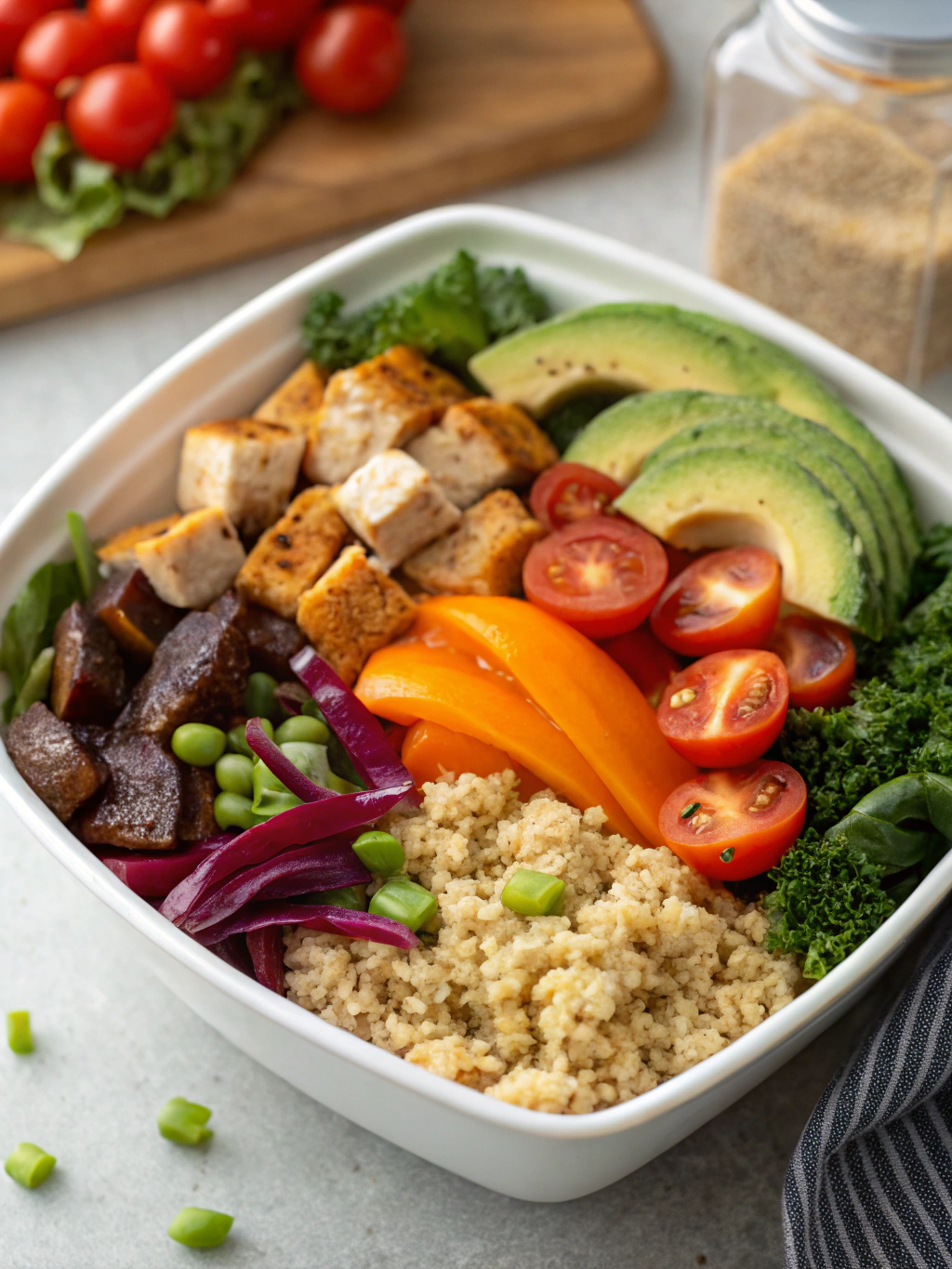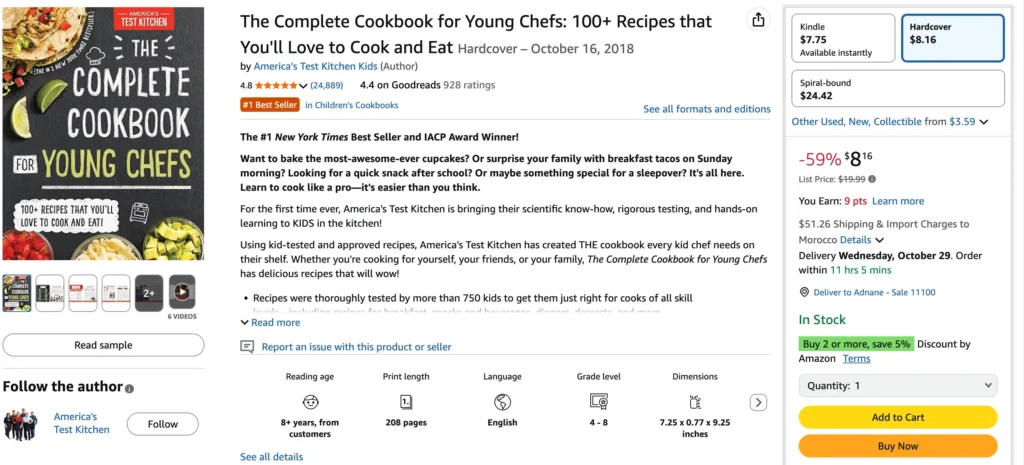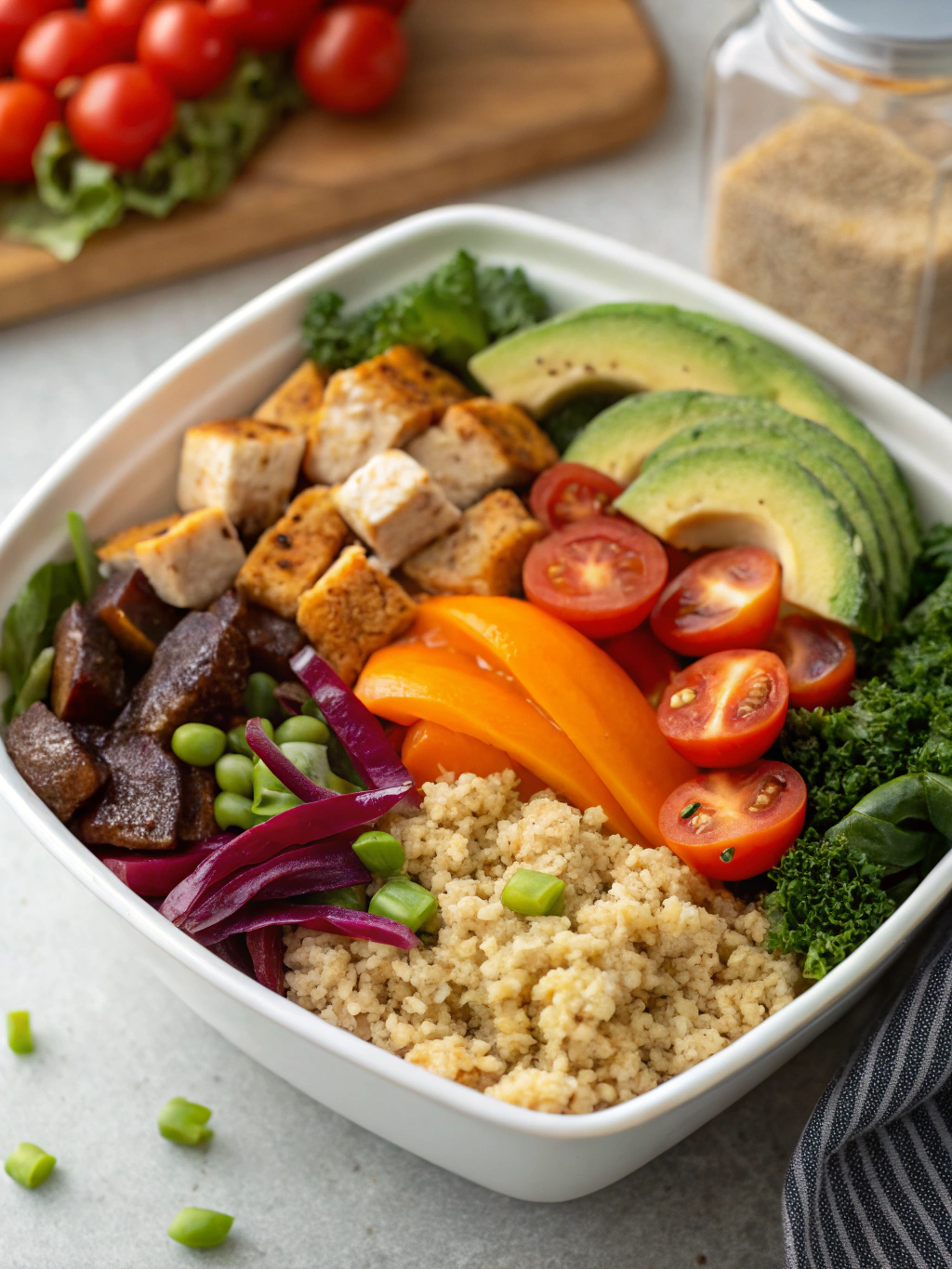Table of Contents
Introduction
Did you know that spending just 60 minutes meal prepping on Sunday can save you over 5 hours during the week while helping maintain stable blood sugar levels? For the 37 million Americans living with diabetes, finding delicious meals that don’t spike glucose can feel like an endless challenge. Diabetic Meal Prep Bowls offer the perfect solution – convenient, customizable, and specifically designed to deliver balanced nutrition with every bite. Prepare these diabetic-friendly bowls in advance full of protein, fiber, and low in net carbs to keep blood sugar steady throughout your busy week. Let’s explore how these colorful, nutrient-dense bowls can revolutionize your weekly meal routine while supporting optimal health.
Ingredients List

For 5 diabetic meal prep bowl, make ahead diabetic lunch, diabetic grain bowl, diabetic bowl recipes, low carb meal bowl servings:
Protein Base (choose one per bowl):
- 4 oz grilled chicken breast (21g protein, 0g carbs)
- 4 oz baked salmon (22g protein, 0g carbs)
- 4 oz tofu, extra-firm (10g protein, 2g net carbs)
- 4 oz lean ground turkey (22g protein, 0g carbs)
Low-Carb Grain Alternatives (½ cup per bowl):
- Cauliflower rice (2g net carbs per serving)
- Quinoa (15g carbs, 3g fiber – higher in carbs but excellent fiber content)
- Miracle rice/konjac rice (0g net carbs)
- Farro (for those who can accommodate more carbs: 26g carbs, 4g fiber)
Vegetables (1 cup mixed per bowl):
- Roasted broccoli florets
- Sautéed spinach
- Sliced bell peppers
- Diced zucchini
- Roasted Brussels sprouts
- Cherry tomatoes
Healthy Fats (1-2 tablespoons per bowl):
- Avocado slices
- Olive oil
- Unsalted nuts (almonds, walnuts)
- Seeds (pumpkin, sunflower)
Flavor Boosters (use sparingly):
- Fresh herbs (cilantro, basil, parsley)
- Lemon or lime juice
- Low-sodium soy sauce or coconut aminos
- Garlic powder, cumin, paprika
- Red pepper flakes
Timing
- Prep Time: 30 minutes (including chopping and organizing ingredients)
- Cook Time: 25 minutes (most components can cook simultaneously)
- Total Time: 55 minutes (40% less time than preparing individual meals each day)
- Batch Cooking Efficiency: Saves approximately 5.5 hours per week compared to daily meal preparation

Step-by-Step Instructions
Step 1: Prep Your Proteins
Select your preferred proteins and prepare them all at once. Season chicken, turkey, or tofu with salt, pepper, and garlic powder, then bake at 375°F for 20-25 minutes until fully cooked. For salmon, brush with olive oil and lemon juice before baking for 12-15 minutes. Let proteins cool completely before slicing or portioning.
Step 2: Prepare Your Low-Carb Bases
Cook your cauliflower rice by sautéing in a pan with a teaspoon of olive oil for 5-7 minutes, or prepare quinoa according to package directions using low-sodium broth instead of water for extra flavor. Divide evenly among your meal prep containers once cooled.
Step 3: Roast Your Vegetables
Toss mixed vegetables with olive oil, salt, and pepper. Spread on a baking sheet and roast at 400°F for 20 minutes, stirring halfway through. Different vegetables have varying cooking times, so group similar ones together (quick-cooking peppers separate from denser broccoli).
Step 4: Prepare Flavor Components
Mix your preferred dressings in separate small containers. A simple diabetic-friendly dressing combines 3 tablespoons olive oil, 2 tablespoons apple cider vinegar, 1 teaspoon Dijon mustard, and herbs – only 1g carb per serving.
Step 5: Assemble Your Bowls
Layer each container with your base, protein, vegetables, and add-ins. Keep wet ingredients separate until ready to eat. For optimal freshness, place delicate ingredients like avocado on top or add just before serving.

Nutritional Information
Average nutritional values per bowl (varies based on specific ingredients):
- Calories: 350-450
- Protein: 25-30g
- Total Carbohydrates: 15-20g
- Fiber: 5-8g
- Net Carbs: 7-15g
- Fat: 15-20g
- Sodium: 300-400mg
- Glycemic Impact: Low, with a glycemic load under 10 per serving
Healthier Alternatives for the Recipe
- Replace traditional rice with cauliflower rice to reduce net carbs by approximately 30g per serving
- Swap mayonnaise-based dressings with Greek yogurt alternatives to cut fat while maintaining creaminess
- Use zucchini noodles as a base instead of grains for an ultra-low-carb option (2g net carbs vs. 15g)
- Choose plant-based proteins like tempeh occasionally to increase fiber intake and reduce saturated fat
Serving Suggestions
- Warm the protein and base before adding cold toppings for a more satisfying texture contrast
- Serve with a side of cucumber slices or celery sticks for added crunch without impacting blood sugar
- For special occasions, include a small portion (¼ cup) of berries for natural sweetness without glucose spikes
- Add a tablespoon of nutritional yeast for a cheese-like flavor without the saturated fat
Common Mistakes to Avoid
- Overlooking Portion Control: Even healthy ingredients can affect blood sugar in large quantities. Use measuring cups initially until you can eyeball portions accurately.
- Forgetting About Balanced Macros: Each bowl should contain protein, healthy fats, and fiber-rich carbohydrates in proper ratios (approximately 25% protein, 25% carbs, 50% non-starchy vegetables).
- Using High-Sugar Sauces: Many store-bought sauces contain hidden sugars. Read labels carefully or make your own.
- Not Testing Blood Sugar Response: Individual responses vary; monitor your glucose after trying new meal combinations.
Storing Tips for the Recipe
- Container Selection: Use glass containers with dividers to keep components separate until eating.
- Optimal Freshness Window: Most prepped bowls maintain peak freshness for 3-4 days in the refrigerator.
- Strategic Layering: Place wet ingredients at the bottom, proteins in the middle, and delicate items on top.
- Freezer-Friendly Components: Proteins and bases can be frozen for up to 3 months; vegetables are best kept refrigerated.
Conclusion
Creating Diabetic Meal Prep Bowls is more than a time-saving strategy—it’s an investment in consistent blood sugar management and overall health. By spending less than an hour preparing these nutrient-dense, portion-controlled meals, you’re setting yourself up for a week of balanced eating without the daily stress of meal decisions. Remember that consistency is key to diabetes management, and these customizable bowls make healthy eating both delicious and sustainable. Have you tried meal prepping for diabetes management? Share your favorite combinations in the comments below!

FAQs
How long will these diabetic meal prep bowls stay fresh in the refrigerator?
Most components will maintain freshness for 3-4 days when properly stored in airtight containers. For maximum quality, store sauces separately and add avocado just before eating.
Can I freeze these meal prep bowls?
You can freeze the protein and grain base components for up to 3 months. However, fresh vegetables are best kept refrigerated as freezing can affect their texture.
Will these bowls help with blood sugar management?
These bowls are specifically designed with a balanced ratio of protein, fiber, and healthy fats to minimize blood glucose spikes. Individual responses vary, so monitor your levels when trying new combinations.
How can I add variety to prevent meal prep boredom?
Rotate different proteins weekly, experiment with global seasonings (Mediterranean, Asian, Mexican), and change up your vegetables based on seasonal availability for endless variations.
Are these meal prep bowls suitable for type 1 and type 2 diabetes?
Yes, these bowls work for both types of diabetes as they focus on balanced nutrition. Those on insulin may need to count carbs more precisely to calculate dosing.
Did you try our recipe ?
There are no reviews yet. Be the first one to write one.


1 thought on “Easy Meal Prep Bowls for Diabetics: Healthy for the Week”